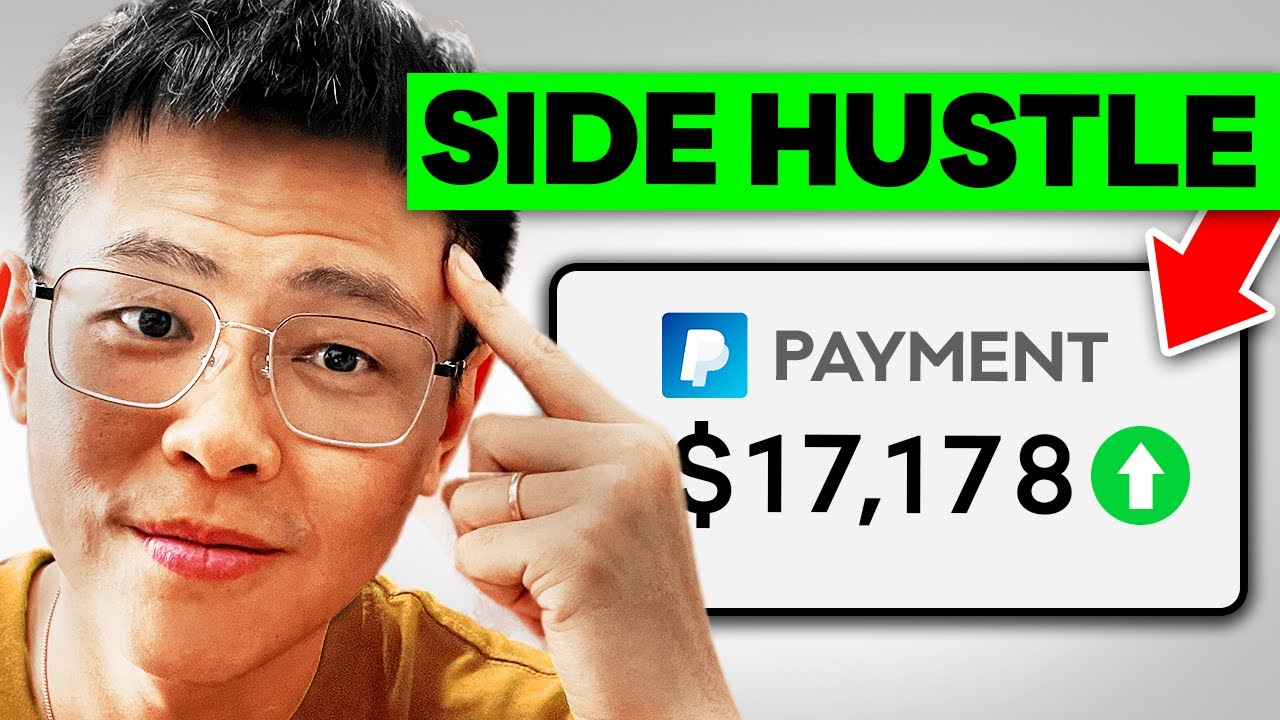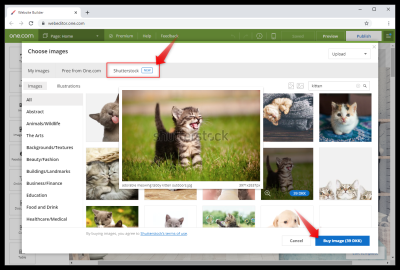If you’ve ever dreamed of turning your photography, artwork, or design skills into a steady side income, Shutterstock might just be the platform for you. As one of the biggest stock photo sites out there, Shutterstock offers a golden opportunity for creatives to earn money by sharing their work with a global audience. Whether you’re a hobbyist looking to make a few extra bucks or a professional aiming for a consistent revenue stream, understanding how
Understanding Shutterstock’s Contributor Program

Shutterstock‘s Contributor Program is the heart of its platform, designed to connect creators with buyers worldwide. When you sign up as a contributor, you’re essentially becoming a part of a vast community where your images, videos, and illustrations can be sold multiple times. Here’s how it works:
- Sign-Up Process: Creating an account is straightforward. You’ll need to provide some personal information and agree to Shutterstock’s terms. Once approved, you can start submitting your work.
- Uploading Content: You upload high-quality images, videos, or vectors through their user-friendly portal. It’s best to upload content that is unique, well-composed, and meets their technical specifications.
- Review and Approval: Shutterstock reviews each submission to ensure it meets their quality and content standards. This process can take a few days. Once approved, your content goes live on the platform.
- Royalty Payments: Every time someone licenses your content, you earn a royalty. The amount varies based on your contributor level, the type of license purchased, and your total earnings.
What makes Shutterstock appealing is its straightforward royalty structure and the potential for passive income. Unlike selling directly to clients, once your content is uploaded and approved, it can generate revenue for years to come without additional effort. However, to maximize your earnings, it’s important to understand the specifics of their royalty system, licensing options, and how contributor rankings can influence your payout rates. Overall, Shutterstock provides a relatively accessible way for creatives to monetize their work, making it a popular choice for side hustlers worldwide.
Factors That Influence Your Earnings on Shutterstock

If you’re thinking about diving into Shutterstock as a side hustle, it’s helpful to understand what can impact how much money you might make. After all, not all contributors earn the same, and a few key factors can really make a difference in your overall income.
First off, the type of content you create plays a big role. Stock photos, vectors, videos, and illustrations each have different earning potentials. For example, high-quality photos of trending topics or niche subjects tend to sell more because they meet specific needs of buyers. Unique and professional-looking videos can also command higher prices, especially if they are well-produced and relevant.
Next, the quantity and consistency of uploads can boost your earnings. Regularly adding fresh content keeps your portfolio active and can increase your visibility on the platform. Contributors who upload consistently tend to attract more buyers over time, which means more downloads and income.
Another important factor is keywording and metadata. Accurate, descriptive keywords help your content show up in search results. The better your keywords, the more likely your work will be seen and purchased. Spending time to optimize your titles, descriptions, and tags can significantly impact your sales.
Additionally, the quality of your submissions is crucial. Shutterstock emphasizes high-resolution, well-composed, and technically sound images. Poor quality or generic content doesn’t sell well, no matter how many you upload. Investing in good equipment and learning some photography or editing skills can pay off in the long run.
Finally, your niche selection matters. Some niches have more demand than others. For example, business and technology themes tend to sell consistently, while trendy or seasonal topics can give you a quick boost. Research current market trends to find out what buyers are looking for, and tailor your content accordingly.
In summary, your earnings on Shutterstock depend on a mix of content quality, consistency, keyword optimization, niche choice, and market demand. Focus on creating valuable, high-quality content and staying active, and you’ll put yourself in a good position to grow your side income.
Average Income Potential for Shutterstock Contributors

So, what kind of money can you realistically expect to earn with Shutterstock? The truth is, it varies quite a bit depending on several factors, but understanding average figures can help you set realistic expectations.
Many new contributors start out earning just a few dollars per month as they build their portfolio and learn the ropes. However, as your content grows and you get more downloads, your income can increase significantly.
On average, Shutterstock contributors earn between $0.25 and $2.50 per download for standard licensing images. Exclusive contributors—those who offer content only through Shutterstock—may earn higher royalties, sometimes up to 30% of the sale price, compared to 15% for non-exclusive contributors.
To give you a clearer picture, here are some estimated earnings based on the number of downloads:
| Number of Downloads per Month | Estimated Monthly Income |
|---|---|
| 10 downloads | $2.50 – $25 |
| 50 downloads | $12.50 – $125 |
| 200 downloads | $50 – $500 |
| 500 downloads | $125 – $1250 |
If you’re consistent and strategic with your uploads, some contributors report earning a few hundred dollars per month after a year or two. Top contributors, especially those with high-quality, popular content, can earn thousands of dollars monthly.
It’s also worth noting that Shutterstock income can be passive—you upload your work once, and it can continue earning over time if it remains relevant and visible. So, while initial earnings might be modest, building a sizable portfolio can lead to a steady stream of income.
Remember, earnings vary based on effort, content quality, niche, and market demand. Many contributors see their income grow gradually, and with patience and persistence, Shutterstock can be a worthwhile side hustle that supplements your income over the long term.
Tips to Maximize Your Earnings on Shutterstock
Thinking about boosting your Shutterstock income? Great! There are several practical ways to make your side hustle more profitable. Let’s dive into some tips that can help you get the most out of your creative efforts.
First, focus on quality over quantity. Shutterstock’s reviewers prioritize high-quality images, vectors, and videos. Invest time in editing your work to ensure it’s sharp, well-lit, and visually appealing. Remember, a polished photo or clip is more likely to sell than a rushed, average one.
Second, diversify your portfolio. Don’t put all your eggs in one basket. Upload a mix of subjects, styles, and formats. This increases your chances of matching buyer needs across different niches and trending topics.
Third, stay on top of trends and seasonal opportunities. For example, during holidays or major events, create relevant content that people are actively searching for. Keep an eye on popular keywords and trending themes on Shutterstock and other stock sites to guide your creations.
Fourth, use relevant and strategic keywords. Your images and videos won’t sell if no one can find them. Be thorough with keywording—use descriptive, specific, and varied terms. Think about what buyers might search for and include synonyms or related phrases.
Fifth, upload consistently. Regular uploads keep your portfolio active and increase visibility. Shutterstock’s algorithms tend to favor contributors with ongoing activity, which can lead to more exposure and sales.
Finally, engage with the community and learn from others. Join online forums, read blogs, or watch tutorials about stock photography. The more you learn about what sells and how to improve your work, the better your earning potential becomes.
Pros and Cons of Using Shutterstock as a Side Hustle
Like any side gig, using Shutterstock has its upfront advantages and potential downsides. Let’s weigh them out so you can decide if it’s the right fit for you.
| Pros | Cons |
|---|---|
| Passive Income Potential: Once your content is uploaded, it can sell repeatedly without much extra effort. | Initial Time Investment: Creating high-quality content takes time, especially if you’re new to photography or design. |
| Global Reach: Shutterstock’s platform exposes your work to a worldwide audience, increasing sales opportunities. | Commission Structure: Earnings per download can be modest, especially after Shutterstock’s commission splits and subscription model. |
| Easy to Get Started: Uploading content is straightforward, and there’s no need for a storefront or complex marketing. | High Competition: Thousands of contributors are vying for buyer attention, which can make it challenging to stand out. |
| Flexible Schedule: You can upload as much or as little as you want, fitting it into your existing routine. | Approval Process: Your work must pass Shutterstock’s review, which can be strict, especially for beginners. |
In summary, Shutterstock can be a rewarding side hustle if you’re willing to put in the effort to create quality content and stay consistent. While the earning potential varies based on your output and niche, many contributors find it a sustainable way to generate extra income. Just remember to weigh the pros and cons, and consider how it fits into your overall goals and schedule.
How to Get Started with Shutterstock Photography and Videography
Thinking about dipping your toes into the world of stock photography and videography on Shutterstock? It’s actually pretty straightforward, and you don’t need to be a professional photographer to start earning. Here’s a simple step-by-step guide to help you kick off your Shutterstock side hustle:
Step 1: Set Up Your Contributor Account
Visit the Shutterstock Contributor website and sign up. You’ll need to provide some basic details like your name, email, and payment information. Once your account is approved, you’re officially a contributor!
Step 2: Understand the Content Requirements
Shutterstock values high-quality, original content. Before you start uploading, familiarize yourself with their guidelines. This includes:
- Clear, sharp images and videos without noise or blurriness
- Releases for people or private property, if applicable
- Properly tagged and keyworded content to improve discoverability
Step 3: Invest in Good Equipment
You don’t need a Hollywood studio setup, but having a decent camera and good lighting can make a huge difference. For photography, a DSLR or mirrorless camera works well. For videography, consider a camera with good stabilization and audio recording capabilities.
Step 4: Practice and Build Your Portfolio
Start by capturing a variety of subjects—nature, cityscapes, lifestyle shots, or anything that interests you. Focus on taking well-composed, high-quality images and videos. Remember, the more diverse your portfolio, the better your chances of making sales.
Step 5: Edit Your Content
Use editing software to enhance your photos and videos. Adjust brightness, contrast, and color balance to make your content pop. But keep it natural—over-edited images can be a turn-off.
Step 6: Upload and Tag Your Content
When uploading, add accurate titles, descriptions, and keywords. Think about what buyers might search for. Use relevant tags, but avoid spammy keywords. The more precise your metadata, the easier it will be for people to find your work.
Step 7: Stay Consistent and Keep Learning
Upload regularly to build your portfolio and increase your chances of sales. Keep an eye on trending topics and popular subjects. Engage with the Shutterstock community and learn from others’ successful portfolios.
Getting started might seem overwhelming at first, but with patience and practice, you’ll find your groove. The key is to keep creating and improving your skills over time. Before you know it, you could be earning a steady side income from your photography and videography efforts!
Conclusion and Final Thoughts on Shutterstock Side Income Opportunities
So, can you really make decent money with Shutterstock as a side hustle? The answer is yes — but with some caveats. Your earnings depend on how much quality content you upload, how well you optimize your keywords, and the demand for your niche. Some contributors earn just a few extra dollars each month, while others have built substantial income streams.
One of the biggest advantages of Shutterstock is its global reach. Your photos and videos can be purchased by clients from all over the world, giving you a huge potential audience. Plus, once your content is uploaded and approved, it can generate passive income over time — meaning you earn money even when you’re not actively creating new content.
However, it’s important to remember that stock photography and videography are competitive fields. To stand out, focus on creating unique, high-quality content that fills gaps in the marketplace. Keep learning about trends, improve your editing skills, and be consistent with your uploads.
In the end, Shutterstock can be a fantastic side hustle if you enjoy photography or videography and are willing to put in the effort. It offers flexibility, the chance to earn passive income, and an outlet for your creativity. Whether you’re looking to supplement your income or turn a hobby into a money-making venture, Shutterstock has potential — just be patient, stay dedicated, and keep honing your craft.


